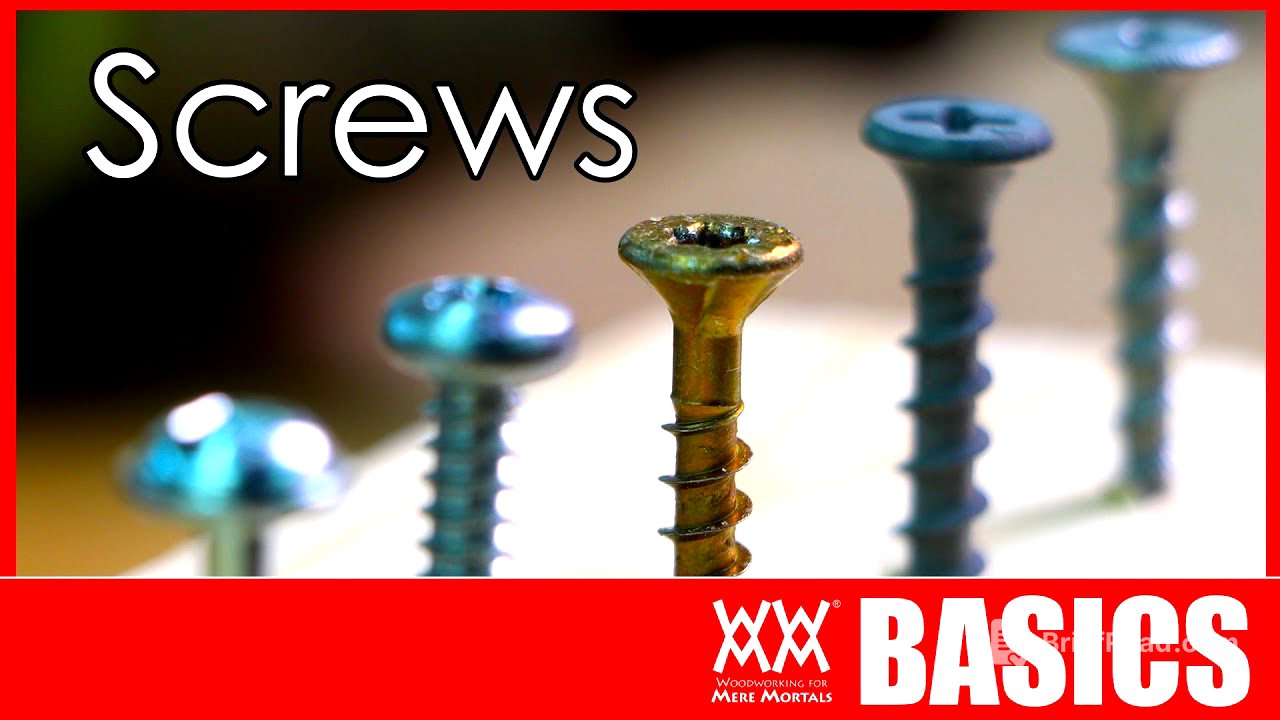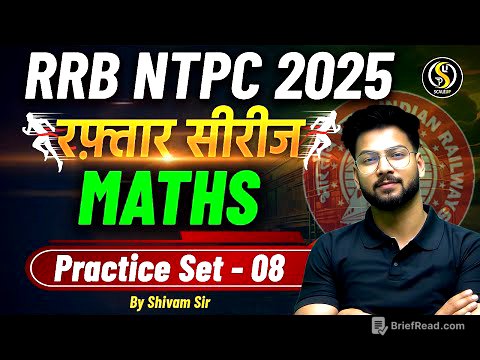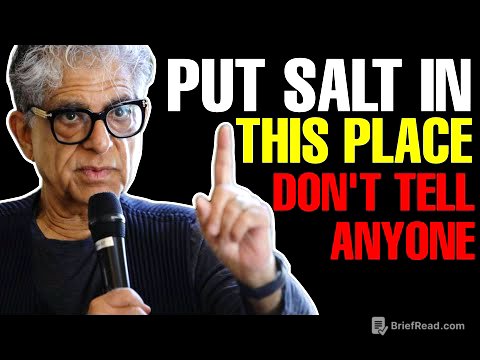TLDR;
This video provides an overview of the most common types of screws used in woodworking. It covers the basic components of a screw, different drive types (slotted, Phillips, square, star), head shapes (flat, pan), and various screw types (wood screws, drywall screws, construction screws, deck screws, pocket screws, machine screws, sheet metal screws). The video recommends using high-quality construction screws with star drives for most woodworking projects and advises against using nails and slotted screws.
- Recommends premium screws like Spax with flat, tapered heads and square or star drives.
- Highlights the importance of understanding screw components like the tip, shank, threads, and head.
- Advises against using nails and slotted screws in woodworking.
Introduction to Screws for Woodworking [0:00]
The video introduces the overwhelming variety of screws available at hardware stores and aims to simplify the selection process for woodworking projects. It suggests that while there are many types of screws, woodworkers can narrow their choices to a few essential ones. The video also recommends visiting local hardware stores for expert advice and the ability to purchase single screws.
Bottom Line Recommendations [1:20]
The video recommends using premium or multi-purpose screws, such as Spax, with flat, tapered heads for countersinking. It suggests using square or star drives for better performance and less frustration compared to Phillips heads, which tend to slip. The presenter keeps number eight, one and a quarter inch star head screws on hand, as they are the most frequently used. Screws are favored for short projects and jigs where time-saving is a priority, and for holding together pieces where wood expansion and contraction are concerns, like attaching a tabletop to a base. Pocket screws are recommended for cabinets and case work, with pocket holes positioned on the undersides or backs of projects to remain hidden.
Bolts vs. Screws [3:10]
The presenter shares a personal distinction between bolts and screws: bolts go through two materials and are secured with a nut, while screws pull two pieces together with only the head visible. Bolts are typically tightened with a wrench. However, the presenter acknowledges exceptions like machine screws and notes that the terminology is not critical.
Nails vs. Screws [3:57]
The video emphasizes that nails are not commonly used in woodworking, with the presenter rarely using them in projects over the past 10 years, except for decorative purposes or to hold boards together while glue dries. Nails are described as difficult to hammer, prone to bending, and less effective at holding than screws.
Components of a Screw [4:36]
A screw consists of four main parts: the tip, shank, threads, and head. Woodworking screws typically have a pointed tip for precise placement, while self-drilling screws feature a split point for cutting into the wood. Threads wrap around the shank and drive into the material. Thread diameter is indicated by a number (e.g., #6, #8, #10), with larger numbers indicating thicker diameters. Number 8 screws are commonly used. In the US, threads are sometimes measured in threads per inch (e.g., 24 or 32), important for matching nuts to machine screws or bolts. Fine threads are used for hardwoods, while coarse threads are used for softwoods and plywood.
Drive Types [6:09]
The video discusses various screw drive types, starting with slotted screws, the original type, which are difficult to use with power tools and not recommended for woodworking except for historically accurate period pieces. Phillips screws are an improvement but still prone to cam-out (slipping). Square drives (Robertson screws), common in Canada, greatly reduce cam-out. Star drive screws are the presenter's favorite, virtually eliminating cam-out and accommodating more torque, typically found on premium screws.
Head Shapes [8:44]
The video explains that flat head screws are the most common in woodworking, designed to sit flush with the surface after countersinking. Pan head or round head screws sit on top of the material and are typically used to attach other materials like metal or plastic to wood, where countersinking is not possible.
Types of Screws [9:39]
The video describes several types of screws: Wood screws are designed to hold two pieces of wood together, with a partially threaded shank. Drywall screws are inexpensive and readily available but brittle and prone to snapping, making them not recommended for woodworking. Construction or multi-purpose screws (e.g., Spax, GRK) are strong, made with hardened steel, and have self-drilling points, though pre-drilling is still advised for critical pieces. Deck screws are made of hardened steel with a corrosion-resistant coating for outdoor projects. Pocket screws are self-drilling with a wide head for pocket hole joinery. Machine screws have no points and are used in pre-tapped holes or with a nut. Sheet metal screws are small with a sharp point for piercing sheet metal.
Conclusion and Recommendations [13:14]
The video concludes by reiterating that while there are many screw choices, woodworkers only need a few essential types. It advises knowing the required types and sizes before going to the hardware store and recommends stocking up only on number eight, one and a quarter inch screws.









